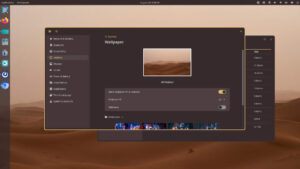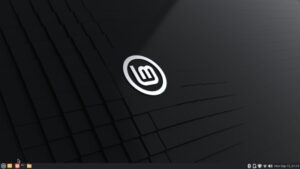The FOSS Force Poll
A couple of weeks back when we ran our two part GNU/Linux distro poll, a couple of commenters made a single point that, at first glance, seemed valid.
It’s not the distro that’s important to most users, they said, because most users don’t interact with the distro itself as they work and play on their Linux machines. Instead, the average user’s direct interaction with a computer is primarily through the desktop environment, whether that be KDE, GNOME, Unity or something they rolled on their own on a Friday night instead of having a boys’ or girls’ night out.
In other words, they opined, it’s the desktop, and not the distro, which represents the operating system — or even the entire computer — to most users.
That’s probably a truth without being the truth.
The problem with accepting the premise as an absolute is that a user’s experience using, say KDE on Mageia, would be very different from running the same KDE on Puppy Linux. Mageia is designed from the ground up to work and play well with KDE, which it does well. Puppy, on the other hand, is designed to run something super lightweight, specifically JWM or Openbox.
| [yop_poll id=”2″] |
Puppy is also designed with old hardware with limited resources in mind, which introduces hardware into the equation as another variable. If you’re running an old 486 that you bought back in the Windows 3.11 days, it’s highly unlikely you’ll be running today’s KDE at all on any distro, and your flavor of Linux will be entirely dependent on what you can get running on very old metal.
So which is more important, distro, desktop, maybe both…or is the real answer more complicated?
A dozen or so years ago this would’ve been an odd question to ask. There weren’t many desktop environments back in the day. There was KDE, GNOME and a handful of lightweight windows managers and that was about it. Indeed, when most of us here at FOSS Force were first getting our feet wet with Linux, a question like “which desktop?” wouldn’t be asked by any but the most technically proficient power user, who’d most likely be looking for something mean and lean with which to tweak a system. The majority of us used either KDE or GNOME, whichever was our distro’s default, because we quickly learned that straying away from the default often had undesired results.
But these days, thanks in part to the lack of enthusiasm that accompanied the release of GNOME 3, there are a plethora of desktop environments, and some distro developers have come to understand the need to offer users choices instead of trying to shoehorn everyone into a single default desktop. For example, Ubuntu officially sanctions more than a handful of *buntus, where devs work to make the Ubuntu base work and play well with desktops other than Unity. Mint, as well, offers several editions that are fine tuned to work with different DEs, such as the Linux Mint Xfce Edition that we use here at the FOSS Force office.
Which is more important to you? Do you choose a distro and go along with the default desktop environment? Or do you start by choosing a DE, then find a distro that uses it by default? Inquiring minds want to know.
Take our poll. We’re very much interested in seeing the results. And if you feel as if you have something else to say on the matter, that’s what the comments section below this article are for.
Who knows? Maybe your comment will lead to another poll.
We’re currently in the midst of our 2016 Indiegogo fundraising drive. Your support is crucial. Won’t you please visit our fundraising page and make a contribution to support FOSS Force?








As a gentooer, definitely the distro. But for both the distro and the desktop, for me, customization is king. No gnome-style “there’s only one proper way to do it and it’s our way”, here.
OTOH, I’m glad that binary-based distros and binary-correctness gnome are out there, for both the users and devs who prefer that sort of thing. That way they don’t have to get too involved with the customizer side and ruin it for people who like it that way. =:^)
(Typed on the plasma5 I only finally got to run properly, after trying it out ever few months, for a couple years. It’s customized to “workable”, now, including a scripted hotkey-based popup menu system I coded myself back in the kde3-2-kde4 transition era, because kde4 never /did/ get the working multikey hotkey sequences back, that broke in the switch from kde3. Less broke this time, tho a significant part of that is likely because after kde4 broke so much, I’m using more plain qt and gtk based solutions that don’t break so often and when they do it’s not everything at once, and not so much kde/plasma, now.)
I think the distro is my key of choice. I prefer to evaluate the package manager adopted, the rolling release over the version release, the default DE over the alternative one, a mainstream distro over a niche or derivative one.
I happily used Arch KDE, Sabayon KDE, Fedora GNOME, Kubuntu, Ubuntu GNOME or openSUSE KDE.
Now I’m on a openSUSE Tumbleweed GNOME and with great satisfaction, but wish to switch again to Arch for my favorite package manager and AUR, with GNOME this time.
Well, for the 30 or so people/families that I’ve converted to Linux because of the many issues that come with owning Windows. I have always showed them Gnome vs Cinnamon vs KDE. All of them loved Cinnamon except one that liked Gnome better. I have explained to them about distros and what it meant to be a user of one over the other. None of them cared. Zero. They just wanted a distro that worked. They didn’t care about package managers. They didn’t even care about open source or the GPL. They just wanted a pretty environment to mouse click on and not to have to deal with viruses anymore.
You and I care about all those other things, because we’re geeks. We get the importance of choosing one distro over another, and which licences are being used. It would be someone asking me what kind of car I drive. I just point to it and say “that black one right there”.
The distro is more important than the desktop, since I can get pretty much any desktop I want on most distros. The distro determines the overall approach to open vs. proprietary software and also to some extent your level of security and privacy. Downloading random binaries from random repos is idiotic and dangerous. I see people trash their Debian and Ubuntu systems all the time by installing some random deb they found somewhere on the net.
Any desktop will do as long as it isn’t Gnome.
I use a distribution derived from Red Hat at home because we use CentOS at work and I want to stay accustomed to the Red Hat distribution family quirks.
But for most users, I think any distribution with good support for their preferred desktop is fine.
I like my programs button on the bottom left, taskbar at bottom, and minimize/maximize/close application buttons on the top right. So Xfce, LXDE/LXQt, MATE, Cinnamon, and KDE are all fine for me. On Fedora Linux, Xfce has been the most consistently stable of those five so that’s what I use. GNOME is Fedora’s bulletproof desktop, but no matter much I try to adjust the user interface is awkward and alien for me.
A mix.
As of late i look for a DE (XFCE in particular) and a lack of something (systemd).
Then i start looking into the install method, and the option of a livcd or similar.
When it comes to Desktop most if not all major distros would support Gnome, Cinnamon, MATE, LXDE, XFCE and OpenBox, but as experience these Desktops might be very different from distro to distro.
That is because distros are very different in the way they handle stable and unstable/testing software packages.
Also distros differ by software discovery, software popularity and recommendations within a community, by what software packages are included pre-installed and in the repos. Some packages might be virtually unknown and troublesome to install within a given community.
So differences might be a lot deeper than it seems on the surface and experiences much more varying than expected.
I think both is important-DE and distro.
While it’s true that my daily routine involves the desktop, it is the distro that makes programs available or not (unless you know how to compile), the frequency of updates, timely bug fixes, etc. I left OpenSUSE in favor of Manjaro for this reason.
I run Linux Mint Mate (3 boxes), MX-14 Mate (2 boxes), Ubuntu Mate (1 box) and PCBSD Mate (1 box). I have several computers I’ve set up for friends; all run Linux Mint Mate. I guess that’s my answer. It’s not the desktop, really, but the programs (I refuse to call them apps) available and the ease of getting to them. A familiar interface makes finding programs more easily. I don’t customize much. I started Linux with Ubuntu 4.10 so that might explain my preference for a Gnome 2 style desktop.
I always use the current Ubuntu LTS. This seems to be the best supported OS for third party apps and hardware. For example, Airtame wireless HDMI works with Windows and Apple (both desktop and mobile) but when it comes to Linux, only Ubuntu is supported. I do like the apt-get package manager and I think Ubuntu probably has the best supported security updates, although that’s hard to judge.
I loved Gnome 2 but the devs destroyed it with Gnome 3. Unity is a horrible attempt at making a mobile DE work on a big screen. So I’ve found a home with the XUbuntu Desktop Session (Xfce plus distro specific adjustments) It’s not perfect but it gives me most of what I want.
Note to all devs: Every desktop should allow user generated launchers for files, URLs, and apps. And these should be dockable in a user customizable panel. Why does Xfce understand that when few others do?
In a nutshell, I’m much more likely to be put off and reject a distro that gives me trouble than by any particular DE. I currently run Mint Cinnamon on stronger machines and XFCE on weaklings – the lesser refinement and cruder file manager with XFCE are small matters. My general preferences for the Ubuntu platform and software repos, with Mint’s approach to LTS support and choice of preinstalled software, are important for minimizing time and trouble mucking with the OS. (I know those are not priorities for all desktop Linux users, let all the flowers bloom.)
I’d say both. I like the set stable distro (Debian right now) and nice, get-out-of-my-way WM (GNOME). They are the perfect duo for my scientific work these days.
I’d say “it’s complicated”.
There was a time when we had fewer applications and RAM was very limited. The DE (or WM) was of utmost importance for it should maximize usability without eating too much memory.
With 4 Gigabytes of RAM, I guess KDE and Openbox are both valid choices. Memory is no longer a bottleneck. But other factors become prominent, like keyboard shortcuts and certain features.
For instance, Xfce and KDE can be configured to exhibit more or less the same behavior; a user would perform the same basic operations without significant detours.
Gnome / Cinnamon / Mate also have similarities (I suppose, I really don’t use them).
And Enlightenment is in a class of its own.
These differences make DE choice relevant; it’s hard for me to feel at home in Gnome (or Enlightenment, BTW).
Basic DE tools can make a difference, too. IMHO, KDE-specific apps like Dolphin, Okular, System Settings etc. make that environment above the others in ease of use.
Now, the distribution can make the user experience glorious or miserable. Anyone who tries a handful of them can find one or more of these problems:
– the hardware, perfectly fit for other distros, won’t work with a certain distribution… and that’s by design!
– the distro is based on another obscure one and uses a package format you’re not familiar with;
– the distro makers choose an old kernel because a new one has some nasty regression;
– packagers more or less careful (some details like optional fonts might be missing);
– packagers keep the software current (e.g. with backports in stable versions);
– the distro is gorgeous versus it looks like Motif;
– applications are tailored to the distro target hardware (e.g. abiword for older PCs);
– applications are minimal but some big ones are offered for common use cases (e.g. Libreoffice where Windows compatibility is a must);
– community is kind but forums close the conversation because your question attracts low-quality answers (i.e., there’s no newbie area);
– the distro is nice but closes up shop (e.g. Crunchbang);
– the distro offered jwm and suddenly discontinues its use (because e.g. it offers a lot of other options);
– these are but a few examples of what can go wrong…
Well if you pick the right distro such as openSUSE it will support all desktops equally well and that’s why if you pick the right distro the desktop doesn’t matter
I say “Both” only because I happen to use various distros on a daily basis, and they each have their qualities. Fedora is my “go to” (and yes, I LOVE Gnome3!) It might not be to everyone’s liking….but everyone’s not using this laptop, I am! I also have openSuSE (X.F.C.E.) Ubuntu (standard Unity) Linux Mint (MATE & Cinnamon) and Debian (MATE). I feel that the real beauty behind Linux and open source is the “Power Of Choice”. One of the things that caused me to flee the World Of Windows was the fact that no matter how much I tried, I was never able to customize it to my liking, not to mention the amount of huge gaping security holes it had. When I first ventured into the world of Linux it was a brush with Linux Mint 12, and then from there I hit Fedora, and found the CEntOS / Scientific Linux distros, and while I still have both CEntOS and Scientific running version 6.x on two servers at home, its Gnome3 and Fedora that have made my venture into the world of Linux an enjoyable one. Are there obstacles that using Gnome3 have? of course, but nothing a few searches on Google can’t fix. Mind you, I don’t thrust Gnome on the people who approach me looking for something /more/ from their computers, in situations like that, I point them to Ubuntu with MATE or Linux Mint with MATE / Cinnamon…and that’s only because the best way to get people to open up and try something else is to give them something close to what they already know. As for DE’s I’m glad we ALL have a CHOICE as to which DE we use, both in production environments, at home, at work where ever!!
“L3” Forever!
(L-ong L-ive L-inux)
@Unbeknownst You nailed it!
On the one hand there is the distribution. What distribution you pick will to a great extent affect what programs are readily available and what programs you have to put more work into getting. Besides that, certain distributions simply aren’t practical on certain hardware, at the very least not without what could end up being a great deal of extra work.
On the other hand, there is the desktop. Certain desktops are not practical on certain hardware. Some distributions may not have your preferred desktop readily available, and compiling is of course extra work. Also, on some distributions some desktops are completely supported, and with some, you’re on your own. So what desktop you want will be affected by personal preference, by what’s practical on the hardware you are using, and by how the distribution you are using supports your desktop.
For me, this ends up meaning that I start with the hardware I am looking to use (or make available for someone else) and go from there. I commonly use Ubuntu Studio or Xubuntu (both defaulting to Xfce) on more powerful machines. For something less powerful, I might use LXLE (LXDE based) or Debian (generally with Xfce or LXDE). For servers I usually use Debian or Slackware. On really low end hardware (Pentium 4 laptop with Intel video that maxes at 1 GB of RAM), I have Salix OS (Slackware based) with Fluxbox.
First priority, is what software am I going to run!!!!!
The desktop environments, then OS, take second and third fiddles compared to the applications you are in using everyday. (and you may be forced to use other OS’s at places like your employers) The applications you MAY have some choice over, as long as you get your work done.
Then, like Linus, I may play with other desktops, but I PREFER to have one, like desktop, across my spectrum of systems so I concentrate on the stuff I am doing. Because of my PI experience, and use of recycled hardware, I do tend to lean towards LXDE for my day to day use. (that I add my customization to)
I have played with KDE, Gnome, Enlightenment, Fluxbox, XFCE, Blackbox, and quite a few others, but in the end, it comes down the applications I spend my time in and a terminal window.
I think for a new Linux user the DE would probably matter most (but then, as mentioned, the default theme etc. used by a each distro could still determine the choice). For me personally, the distro is by far the most important, because availability of applications (the more the merrier), security and stability (No BSOD’s!!) are more important to me than the eye candy. I always install at least 3
DE’s (Fluxbox, XFCE, and KDE) and often more (Enlightenment used to be one of my favourites). Since I seldom have state-of-the art hardware, I use lighter DE’s whenever I know I will do lot of data crunching, while Gnome and KDE is mostly used for day-to-day tasks.
In the poll, I answered both were equally important. After reading the comments here, I realize that all my Linux machines are running variations of Debian — sid on my desktop and laptop, wheezy on my EdgeRouterX and jessie on my Raspberry Pi and my granddaughter’s desktop.
I prefer XFCE as a sufficiently light DE but I installed it, Gnome and KDE on my granddaughter’s desktop. She mostly uses her Chromebook so I don’t really know which DE she prefers.
Pity i didn’t notice this poll to participate in time. For me, it all boils down to the distribution, as none ever features the desktop i’d prefer anyway. In fact, i had to build my own, based on Debian/Jessie, in order to finally get a properly preconfigured light default user environment of choice. In my case this is good old Window Maker, and the little project has grown into a full blown installable live system. Check out the current release at http://sourceforge.net/projects/wmlive/files/wmlive_0.95.7-2/ if interested in something different than the usual desktop metaphor.
@Kevin
“@Unbeknownst You nailed it!”
I’m a professional whiner… years and years of practice on my CV 🙂
Now, seriously, that was not meant as a complaint, just an inventory of a few issues I’ve faced.
I appreciate their work and even if some decisions are not entirely of my preference, I trust they choose what they consider to be the best option.
By “they” I meant the distribution developers…